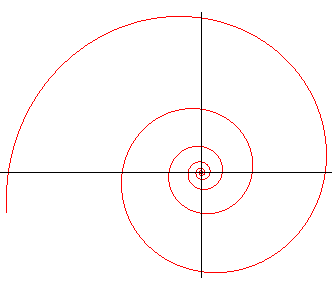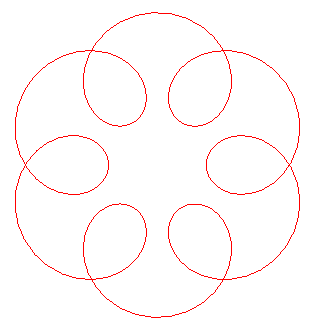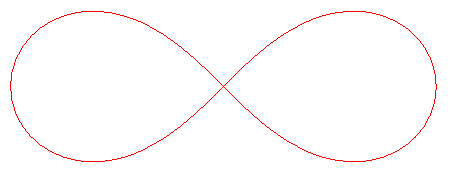The special case e = 1 is studied on the page dedicated to the Norwich spiral.
| next curve | previous curve | 2D curves | 3D curves | surfaces | fractals | polyhedra |
STURM SPIRAL
| Curve studied by Sturm in 1857 and Masurel in 2014.
Other name, in this article: Mannheim curve. |
The Sturm spirals are the curves such that the radius of curvature is, at all points, proportional to the distance to a fixed point: .
The special case e = 1 is studied on the page dedicated to the Norwich spiral.
| Differential equation: First integral: |
| If a = 0, then |
 |
| Elliptic case, e<1
Cartesian parametrization:  where
where Complex parametrization Curvilinear abscissa: Radius of curvature: When q is rational, the order of the rotation symmetry is equal to the denominator of q minus 1. |
 |
| Hyperbolic case, e >1
Cartesian parametrization: Curvilinear abscissa: Cartesian tangential angle: Radius of curvature: |
 |
Remarkable properties (in the case e = 1 as well):
- the roulette with linear base of a Sturm spiral is a Duporcq curve with equal parameter e (hence the used of this letter e, associated to the eccentricity of a conic).
- the evolute of the Sturm spiral in the elliptic case is an epicycloid
- the evolute of the Sturm spiral in the hyperbolic case is a para- or hypercycloid.
| Consider now the curves such that the curvature is proportional to the distance to a fixed point; the differential equation |
|
| The case c = 0, gives |

The curvature of a lemniscate is proportional to the distance to its centre. |
| Finally, one of the solution to |
Compare to the elastic curve, a curve such that the curvature is proportional to the distance to a fixed line, and a certain kind of radioid.
| next curve | previous curve | 2D curves | 3D curves | surfaces | fractals | polyhedra |
© Robert FERRÉOL
2017